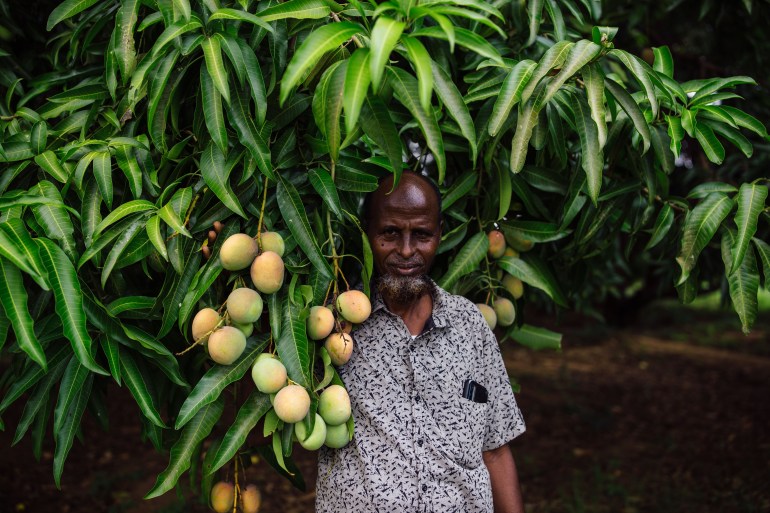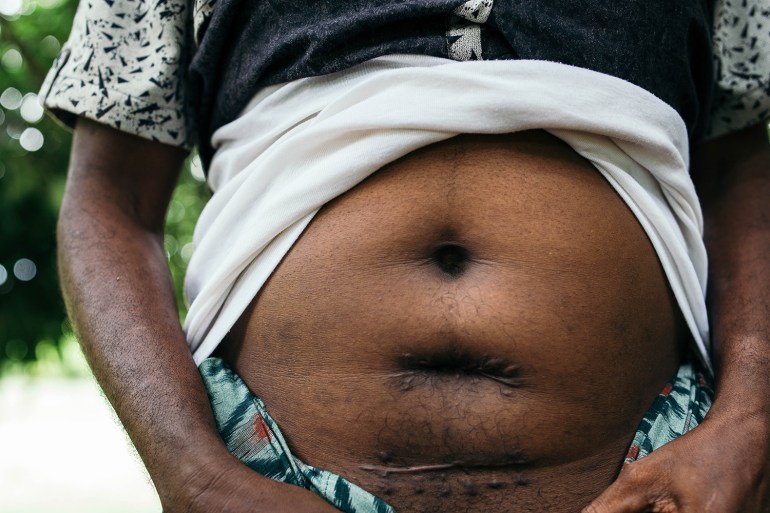By AL JAZEERA
Garissa, Kenya – In January 2020, one of the biggest locust plagues to hit the Horn of Africa in 70 years landed in Garissa, a remote town in northeastern Kenya near the Somali border. The region is honeycombed with small-scale croplands growing mostly maize and an array of produce – tomatoes, watermelons, bananas, lemons – belonging to farmers such as Mohammed Adan.
As millions of locusts descended, devouring all living flora in sight, Adan and his fellow farmers were horrified. This region is no stranger to locusts––the United Nations Food and Agriculture Organization (FAO) even has a designated Desert Locust Control Committee (DLCC) to mitigate periodic damage from locusts. Still, mayhem ensued during the plague.
The FAO spearheaded a “Desert Locust” campaign with a budget of more than $230m, in partnership with the World Bank and World Food Programme. Together, they aided Kenya’s Ministry of Agriculture in spraying a cocktail of pesticides across 100,000 hectares (250,000 acres) of land, home to 26,650 households.
Adan, responsible for a family of 11, was relieved to receive such support, as were his neighbours. After a rushed, impromptu workshop hosted by a government agricultural extension officer, where they learned how to mix the pesticides with water to fill knapsack sprayers, the farmers set off to save what was left of their crops. But the farmers say they were not briefed on what kind of chemicals they were given, nor provided with any protective gear.
Amidst the frenzy, Adan sloshed some of the concoction across his torso. He did not think much of it at the time. It was hours before he rinsed himself off with water, and weeks before he started feeling really sick with abdominal pain, nausea, and an inability to pass urine. Thus began a long journey of being shuttled in and out of hospitals. Now, three years later, he is facing the possibility of a sixth surgery.
“It’s hard to calculate how much the damages came to,” 28-year-old Abubakar Mohammed (Abu), one of Adan’s sons, tells Al Jazeera. “A lot of it can’t be [quantified].”

Bureaucratic aftermath
The Ministry of Agriculture has denied issuing pesticides to farmers; Ben Gachuri, a communications officer in Garissa told Al Jazeera by telephone that it was “impossible that farmers could have been instructed to spray [pesticides] themselves” and that in the “three years since the final spraying, no one has ever come forward with complaints about suffering effects from the pesticides”.
FAO representatives declined to publicly release reports about documented user errors and exact pesticide makeup information, or their procurement procedure. The East Africa regional office emailed a statement downplaying FAO’s role in selecting products – authorised or not. They also denied the possibility that untrained community members were involved, insisting that only “well-trained/properly equipped teams undertake controls, not communities or farmers”.
In March 2023, the DLCC hosted a meeting in Nairobi to tout its success in salvaging northern Kenya’s food security. The meeting, according to Christian Pantenius, a former FAO staff member who attended, failed to address multiple errors internally admitted by the FAO as part of their 2020 spraying campaign in Kenya and Ethiopia.
“I was so, so disappointed,” Pantenius, who worked as an independent consultant coordinating the campaign, told Al Jazeera. “It was a massive missed opportunity.”

Of the 193,600 litres (51,000 gallons) of pesticides the FAO procured for the Kenyan government, 155,600 litres were organophosphates such as fenitrothion and chlorpyrifos. These chemicals have been banned for use on food or feed crops across most Western countries for their proven neurological toxicity to humans and ecological devastation.
Still, the FAO procured and distributed them to untrained community members against the advice of its own independent advisory body, the Locust Pesticide Referee Group (LPRG).
In a 2021 report, the LPRG expressed uneasiness about FAO’s choice of outdated chemicals: “In view of increasing concerns about the use of synthetic insecticides and the absence of new products evaluated for locust control, emphasis should be given to the least toxic compounds already evaluated in relation to human health and environmental impact.”
“If countries decide to use pesticides that are not supported by the FAO, such as carbofuran, they are within their rights. The FAO will just not use them in campaigns it runs itself,” said James Everts, an ecotoxicologist with the LPRG, in an email interview with Al Jazeera. “A compound like fipronil – banned in the UK, approved in the US, Australia, Belgium, and the Netherlands – is extremely effective against locusts. However, large-scale, long-term observations have shown that there is a long-term threat to ecological key organisms.”
The FAO’s East Africa office dismissed these concerns from its own advisory body and has insisted all pesticides were procured through official channels and are technically legal, according to Kenya’s Pesticide Control Board listing.
An internal report dated September 2020 that Al Jazeera obtained from sources at the Ministry of Agriculture showed that the FAO did not conduct required environmental and social impact assessments as per Kenya’s environmental laws. The report condemned the lack of communication with communities on the ground regarding when the pesticides were sprayed.
In northern Kenya’s Samburu County, fenitrothion – banned in New Zealand in 2016 – was found to be used by “non-trained personnel” wielding motorised and knapsack sprayers. The rate of application was also dangerously high: 34 litres per hectare, far more than the recommended rate of 1 litre per hectare. Spraying had also been done on a rainy day, spiking risks of chemical run-off. High honeybee mortality was observed shortly afterwards.

‘More pressure’
All this has happened, experts say, despite the availability of a more environmentally friendly alternative, Metarhizium acridum, also known as Novacrid.
Novacrid trials were carried out in northern Kenya’s Turkana and Marsabit counties in 2020 to great success: an estimated 90 percent of locusts were eliminated from the test trials. The LPRG described this biopesticide as the “most appropriate control option … despite its higher cost”.
Yet it is unlikely that Novacrid will ever be adopted and used on a large scale. “Biopesticides in locust control don’t serve economic interests,” explains Pantenius. “That’s why there’s no interest in seriously using biopesticides for pest control. It’s a matter of political will.”
Since biopesticides like Novacrid – designed to target desert locusts – cannot be used for other pest control, unlike their more noxious organophosphate counterparts, the pesticide industry cannot rely on them, he explains. “Locusts come and go. That’s the biggest obstacle in introducing this strategy.”
Local governments feel similarly, Pantenius continues, but institutions such as the FAO should be advocating for stricter accountability, he said.
“We [the FAO] should be communicating to governments that we want to help them, but that we can’t supply them with toxic chemicals,” he says. “It’s also important for donor countries, the EU, World Bank, USAID to put more pressure on [governments] next time.”
Paul Gacheru, a programme manager at Nature Kenya – East Africa’s oldest natural history society – is sympathetic to the complex tradeoffs governments and institutions alike face, especially in times of emergency. Still, he believes there needs to be a stronger sense of environmental integrity – especially from global institutions such as the FAO.
“There’s a loophole available in the law,” Gacheru explains. “Global or international institutions might take advantage of less-developed countries with less strict processes and policies. It’s what you can call the dumping of chemicals.” A European country may have an insecticide that it has produced but is now banned and rendered obsolete in its own country, he continues, but needs to sell it off.
But Adan simply wants to return to some semblance of a normal life. He is not even necessarily seeking compensation from the government for his injuries. “It would be nice to have the bill costs covered,” he adds as an afterthought.







Discussion about this post